Last updated on January 28, 2025
The rise of Agentic AI has become a dominant theme, following closely on the heels of generative AI. Jensen Huang’s keynote at CES 2025 unequivocally positioned Agentic AI as the next major wave of the AI revolution, a sentiment that prominent figures like Satya Nadella and Sam Altman echoed in recent public discussions.
However, as AI agents usher in a new era of autonomy in the digital realm, the security of critical digital data becomes paramount. The inherent nature of AI agents as software systems makes them susceptible to compromise. Consider this: AI agents are designed to perceive, analyze, and execute tasks to achieve specific goals. What happens if a security breach exposes these agents to cybercriminals? The consequences could be twofold: 1. The agents could perform their intended tasks while simultaneously engaging in malicious activity, or 2. They could be entirely repurposed, abandoning their original purpose and instead carrying out instructions from malicious actors.
Agentic AI holds immense promise for transforming telecom network optimization. Yet, its integration into complex networks that manage sensitive subscriber and enterprise data presents significant challenges. While the advantages of autonomous network management are clear, the inherent risks of entrusting such powerful systems with valuable information necessitate scrutiny.
One of the key worries with AI adoption is hallucinations in LLM which may be referred by AI agents. It is always in question in the early days of Generative AI. It is well covered in article series by Alok Tripathi on LinkedIn.
This article delves into the potential dangers of agentic AI within the telecom sector and proposes guidelines for responsible and secure deployment.
Types of Risks using Agentic AI/AI Agents
- Data Privacy Challenges
Telecom networks deal with sensitive subscriber and enterprise data, including personal information, usage patterns, and business-critical communications. Agentic AI, being deeply integrated into these systems, becomes a custodian of this data. If compromised, the fallout could be catastrophic, exposing subscribers and enterprises to breaches and privacy violations.
- Vulnerabilities to Cyberattacks
As a software system, Agentic AI is not immune to hacking. Malicious actors could exploit vulnerabilities to gain control, manipulate decisions, or disrupt network operations. The autonomous nature of AI amplifies these risks, as compromised agents could make unintended, harmful adjustments without human oversight.
- Compliance Complexities
Telecom operators must adhere to stringent regulations like GDPR, CCPA, and sector-specific mandates. If not controlled properly, agentic AI systems, operating autonomously across borders and jurisdictions, could inadvertently breach compliance requirements, leading to hefty fines and reputational damage.
- Impact on Critical Infrastructure
Telecom networks are the backbone of global communication, supporting emergency services, financial transactions, and enterprise operations. A failure or misstep by AI agents could have widespread, cascading effects on critical infrastructure.
Solutions and Guidelines for Safe Implementation
Robust security protocols are essential to safeguard telecom networks, requiring multi-layered security measures such as encryption, authentication, and intrusion detection systems. Expect to see new security and confidentiality measures for AI agents in telecom infrastructure.
Regular updates and patches for AI systems must also be prioritized to address known vulnerabilities effectively. Ensuring regulatory compliance is equally critical; embedding compliance checks within AI operations guarantees adherence to local and international regulations, while maintaining audit logs fosters accountability and transparency across operations.
Human-in-the-loop (HITL) mechanisms play a pivotal role in enabling oversight of critical decisions, allowing operators to intervene in cases of anomalies, and establishing clear escalation protocols for manual overrides.
Additionally, explainability and transparency in AI systems are non-negotiable. Developing systems that provide clear, understandable rationales for decisions and conducting regular training for stakeholders ensures trust and informed usage of AI capabilities.
Finally, resilience and fail-safe measures must be integral to the design of AI agents. These systems should include fail-safe mechanisms to revert to baseline operations during anomalies or attacks, coupled with redundancy and disaster recovery systems to ensure uninterrupted network operations.
Questions to answer
The implementation of agentic AI in telecom infrastructure is a complex undertaking that requires careful consideration of various factors. I would like to pose the following questions to the community:
- How can telecom operators strike a balance between leveraging AI’s potential and mitigating its risks?
- What governance models should be in place to ensure the ethical use of AI agents?
- Should telecom networks prioritize HITL systems, or is full autonomy the future?
- How can operators foster collaboration between AI developers, regulators, and cybersecurity experts?
- What role should international standards play in shaping the deployment of Agentic AI?
Summarizing
Agentic AI offers transformative benefits but must be approached with caution, especially in critical telecom networks. By proactively addressing risks and fostering industry-wide collaboration, we can harness its potential while safeguarding data, privacy, and trust.
Your insights are invaluable—what do you think is the best approach to implementing AI agents in telecom infrastructure? Join the conversation and shape the future of AI in telecom.


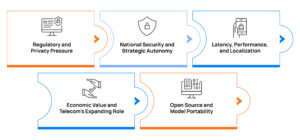
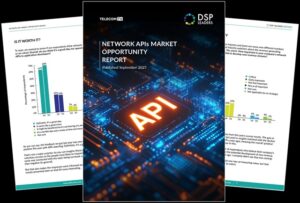

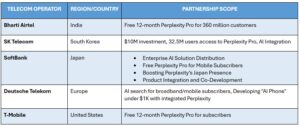
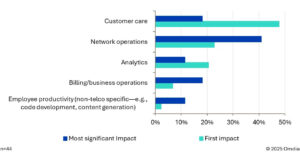
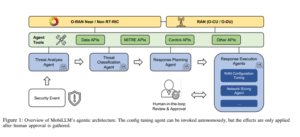
Be First to Comment